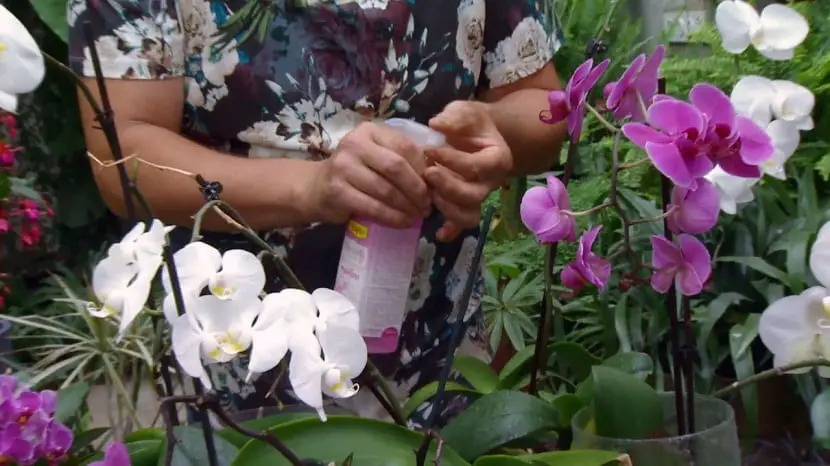
If you are an orchid lover, you will know that these plants require special care and they are complex to take care of in most of their diversities. The fertilizers and fertilizers are an important support in the contribution of nutrients that allow the orchid to develop properly and obtain the beautiful flowering that you want so much.
Regardless of the species or variety, orchids need certain vitamin elements, amino acids and other micro elements for the constitution of their tissues, among which is the Nitrogen, Phosphorus and Potassium.
Which fertilizer is the ideal for your orchids?

Various fertilizers specially formulated for orchids are sold on the market. Generally these fertilizers they are usually used through irrigation waterby means of foliar fertilizer or wands that release the fertilizer slowly. In this last method of compost, it is the plant itself that absorbs the amount of nutrients it needs.
Foliar fertilizers are absorbed by the leaves and you must apply them with nebulizers, instead the irrigation fertilizers dissolve in the irrigation water and are absorbed through the roots.
The method you choose to use will depend on the way of orchid cultivationif it is planted in a pot or rooted in a tree or suitable structure.
If we use water soluble fertilizersthe quantity to be supplied according to its vegetative period or moment, is the following:
For increased flowering
You use 10 parts of Nitrogen, 30 parts of Phosphorus and 20 of Potassium
For vegetative restart
Increase nitrogen concentration to 30 parts10 parts of Phosphorus and 10 of Potassium
For the rest of the periods
It would be 20 parts of each element
When the plant is subject to periods of abiotic stressI recommend using a biostimulator to help the plant overcome these episodes, acting as a enzyme activator of the metabolic process.
At the time of plant your orchid in a potuse a suitable substrate for the compost base. Pine bark is the substrate par excellence that mixed 70% with other materials, allows a good grip and aeration of the roots of the orchid, there are different sizes of granulometry depending on the size of the roots of the plant. This substrate should be replaced at most every two years, as it loses qualities, salts accumulate and the substrate becomes excessively acidic, thus damaging the roots of your orchid.
The other components that complement this substrate is Phagnum Moss, also called Peat mossis used in a proportion of 10%. It serves to retain moisture and does not provide any type of nutrient. Likewise, you can also use expanded clay, charcoal, pieces of cork, walnut and egg shells.
Orchid diseases

Orchids are susceptible to disease, so it is necessary to give it the necessary care to prevent the risk of pathogens. Common diseases and pests are:
Leaf spots, petal blight and fungi, mainly motivated by poor growing conditionshumidity and improper use of fertilizers.
Pests such as mealybugs, spider mites, and scales. The latter adhere under the leaves and if they are allowed to advance for a long time, destroy the orchid completely.
Viruses can be mistaken for fungal infections. In the event that you detect the existence of a virus in the orchid, you must discard it as soon as possible, since it is a incurable problem and can be transmitted to other plants,
They exist in the market ideal insecticides and fungicides for the treatment and prevention of pests and diseases, causing repellency effects and inhibition of the feeding of the parasite or insect.
